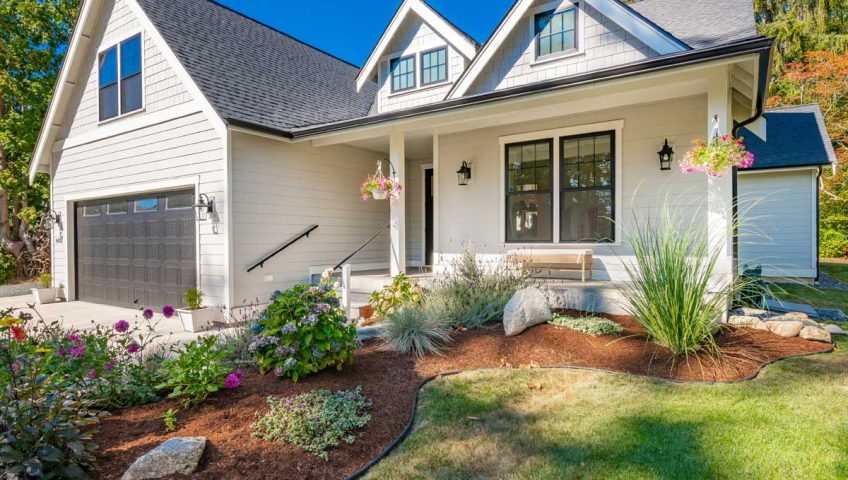
How Often Should You Paint Your House Exterior?
A fresh, durable paint job protects your home from sun, rain, and daily wear while boosting curb appeal. If you’ve wondered, “How often should you paint your house exterior?” The short answer is that timing depends on climate, materials, prep quality, and maintenance.
The longer answer below gives you a clear, practical timetable, plus pro guidance from D&R Painting and Construction, to help you confidently plan the next project and maximize every dollar you invest in painting the house exterior.
What Determines Exterior Repaint Frequency?
Climate & Sun Exposure
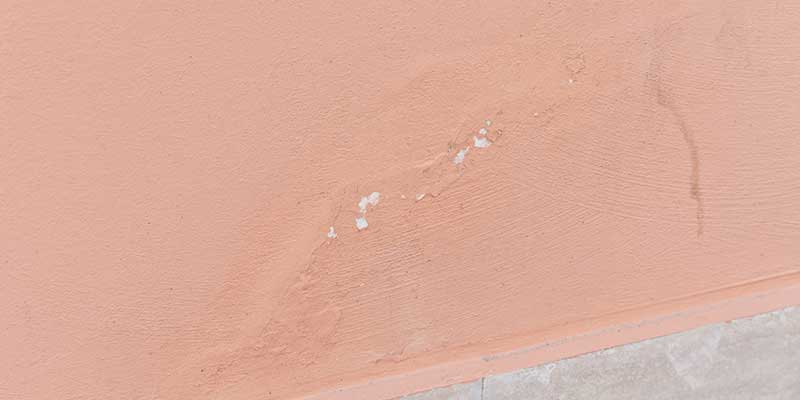
Sun-baked south and west walls degrade fastest because UV breaks down resins and pigments, leading to chalking and fading. Heat, humidity, heavy rain, and occasional freeze–thaw cycles stress paint films, so these elevations often need attention a year or two earlier than shaded sides.
Siding Material & Condition
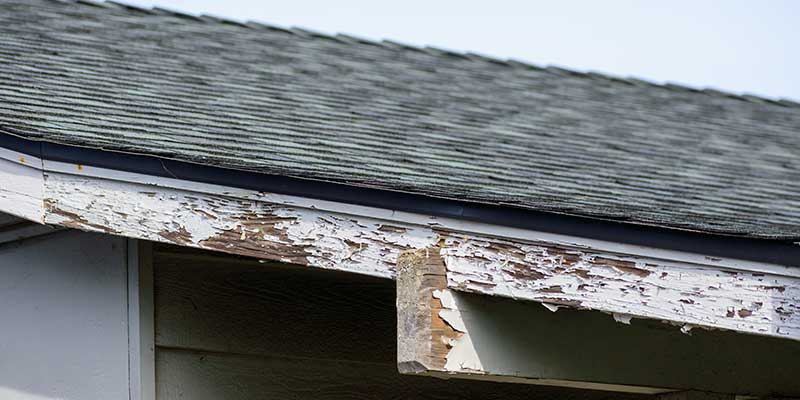
Different substrates move and absorb moisture at different rates. Porous wood and stucco need more frequent repaints than fiber-cement or masonry, while older, cracked, or previously neglected surfaces shorten cycles by exposing paint to moisture and movement.
Previous Paint System

A high-adhesion primer, sufficient film build, and thorough hand prep dramatically extend service life. Weak washing, skipped sanding, thin coats, and brittle caulk shorten the clock, making the next repaint necessary earlier than expected.
Color & Sheen Choices
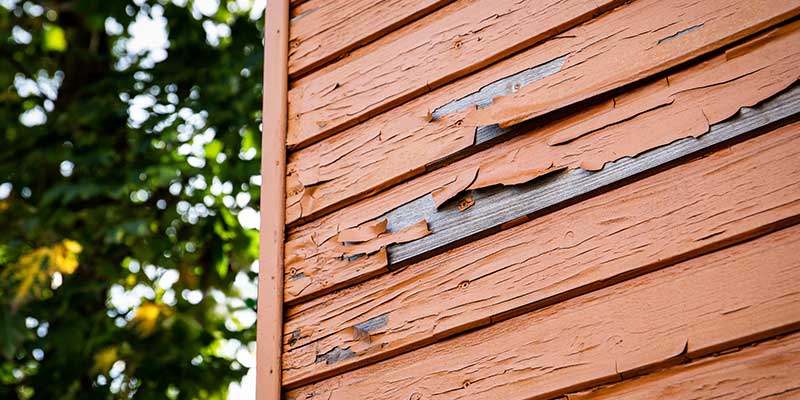
Darker colors absorb more heat and can fade faster, especially on southwest exposures. Higher sheens shed dirt and moisture better, but highlight surface imperfections; choosing balanced light reflectance values helps manage durability and appearance.
Surroundings & Maintenance
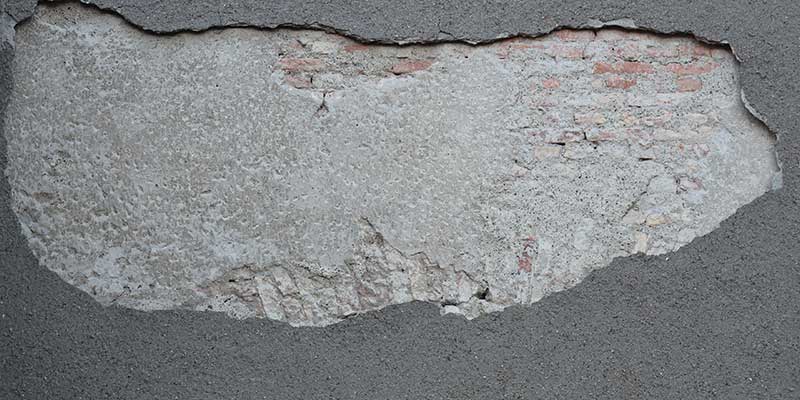
A spring wash, strategic recaulking, and selective touch-ups on the harshest faces can push a repaint out by years. This small routine is one of the most cost-effective steps to paint exterior house with longevity in mind.
Recommended Repaint by Materials
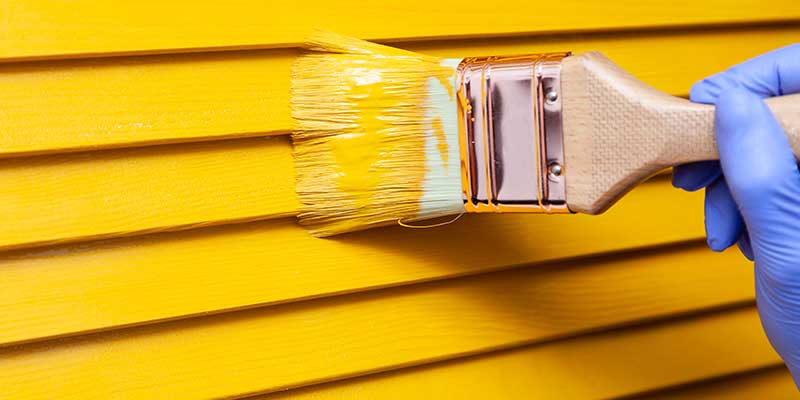
Wood Siding & Trim
3 to 7 years paint; 2 to 4 years solid stain; shorter in high-sun or coastal zones:
Wood expands and contracts with moisture and temperature, so coatings flex constantly. Expect repainting on a 3–7-year cycle for paint and 2–4 years for solid stain, with the lower end in high-UV or salty environments.
Fiber-Cement
7 to 12 years with premium acrylic and proper primer:
Dimensionally stable and less porous, fiber-cement holds paint well when primed correctly and coated with 100% acrylic. With quality prep and products, many homes enjoy a decade or more between repaints.
Stucco
5 to 10 years:
Stucco breathes and can develop hairline cracking. Breathable acrylics or elastomeric bridge micro-cracks resist wind-driven rain and, when properly applied, usually deliver mid- to upper-range service life.
Brick & Masonry
10 to 15 years for painted brick; breathable coatings and efflorescence control:
Painted brick and block can last longer if moisture and salts are managed. Breathable coatings and efflorescence treatment help prevent blistering and keep cycles closer to the 10–15 year range.
Aluminum & Vinyl
7 to 10 years; verify paintable vinyl color shift limits to avoid warping:
Sound aluminum takes paint predictably; vinyl requires careful color selection to avoid excess heat gain. With compatible primers and lighter, approved colors, these substrates often reach the upper end of the range.
Signs It’s Time to Repaint Your Home
Fading, Chalking, and Color Mismatch: When the color looks washed out and a white residue rubs off on your hand, UV has weakened the film. Patchy touch-ups that won’t blend signal that the overall system is aging and due for a reset.
Peeling, Cracking & Alligatoring: Edge lifting at boards and trim reveals adhesion loss from trapped moisture or poor bonding.
Failed Caulk & Hairline Cracks: Open joints and pulled caulk around windows and trim invite water intrusion and energy loss. Replacing failed sealant early stabilizes the paint film and can delay a full repaint.
Mildew, Rust & Stains: Persistent staining or growth that returns quickly after cleaning indicates coatings are losing protection. Addressing the source and recoating with the right primers and topcoats restores resistance.
How to Extend the Life of Your House Exterior Paint Job

Durability begins with substrate health. A low-pressure wash, meticulous scraping, feather-sanding to solid edges, spot-priming bare wood, and timely carpentry repairs create a foundation that makes every coat last longer.
Pair substrates with proven systems: bonding primers on glossy or chalk-prone areas, 100% acrylic topcoats for UV and flexibility, and elastomerics to bridge stucco hairlines. Sticking with compatible manufacturer systems reduces failure points.
A spring wash, strategic recaulking, and selective touch-ups on the harshest faces can push a repaint out by years. This small routine is one of the most cost-effective steps to paint an exterior house with longevity in mind.
Color Strategy for Longevity: How it Works
1. Light vs. Dark Exterior Colors
Lighter colors reflect heat and tend to fade more gracefully. Choosing hues with higher light reflectance values reduces thermal stress, especially on vinyl or sun-drenched elevations.
2. Accent Exterior Colors & Trim
Semi-gloss and gloss on trim and doors enhance cleanability and shed water. UV-stable, high-quality pigments hold color longer on bold entries and shutters.
Quick Decision Framework: “Do I Paint This Year?”
A quick walk-around tells the story. If you find more than one red flag, visible chalking, lifted edges, hardened or cracked caulk, or uniform fading, it’s time to plan estimates and schedule work.
Record the last project date, substrate, products used, and sun/wind exposure notes. That log helps answer how often should you paint your house exterior next time and keeps maintenance proactive rather than reactive.
Protect Your Curb Appeal and Structure
With the right products, weather window, and prep, you don’t need to question how often should you paint your house exterior, especially when maintaining caulk and washing annually. If your home requires a more professional approach, call D&R Painting and Construction to inspect, recommend the best time to paint exterior of your house, and map out the precise steps to paint the exterior for maximum durability.
Reach out today to schedule a free, no-pressure consultation and get a written estimate tailored to your materials, exposure, and budget. Your next paint job should be the longest-lasting one yet, and our team is ready to make it happen.

